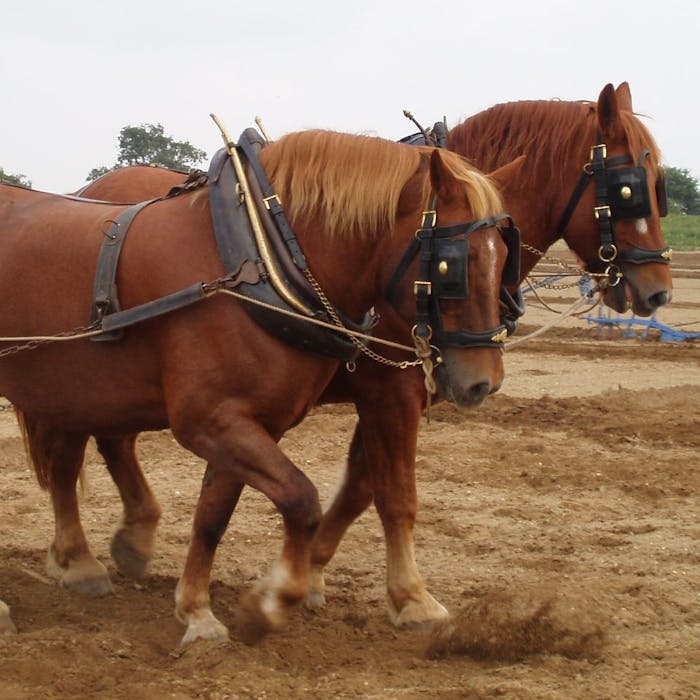
The Suffolk Punch - an admirable working horse
The Suffolk Punch is an English breed of working or draught horse that played an important part in the development of agriculture and pre-mechanised haulage of goods like coal and beer. It is a much respected and admired animal.
The first known mention of the Suffolk Punch is in William Camden's Britannia, published in 1586, in which he describes a working horse of the eastern counties of England that is easily recognisable as the breed - the oldest breed of horse that is in the same form today. They were developed in Norfolk and Suffolk, a relatively isolated area by local farmers for farm work, for which they needed a horse with power, stamina, health, longevity, and docility. Because the farmers used these horses on their land, they seldom had any to sell, which helped to keep the bloodlines pure and unchanged.
The Suffolk Punch was used mainly for draught work on farms but was also often used to pull heavy artillery in wartime. Like other heavy horses, they were also used to pull non-motorised vans and other commercial vehicles.
The Suffolk Punch remained popular until the Second World War, when a combination of the need for increased wartime food production (which resulted in many horses being sent to the slaughterhouse), and increased farm mechanisation which followed the war, decimated population numbers. A revival of interest in the breed has occurred since the late 1960s, though the Rare Breeds Survival Trust considers their survival status critical. They are a familiar sight at traditional agricultural shows and fairs.
Suffolk Punches generally stand 165 to 178 centimetres (16.1 to 17.2 hands), weigh 900 to 1000 kilograms (2000 to 2200 lb), and are always chestnut in colour.
Further reading
Links to external websites are not maintained by Bite Sized Britain. They are provided to give users access to additional information. Bite Sized Britain is not responsible for the content of these external websites.
